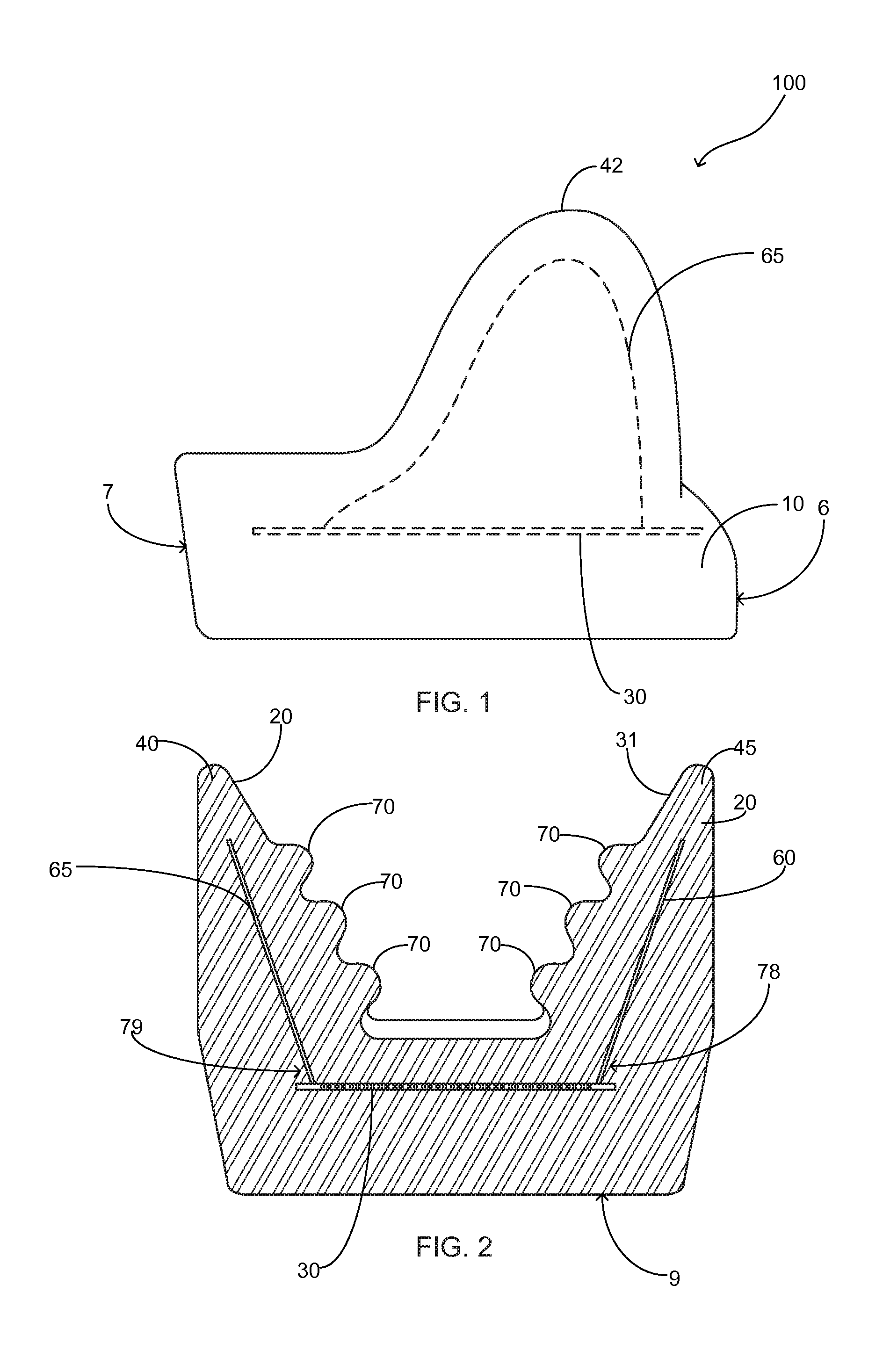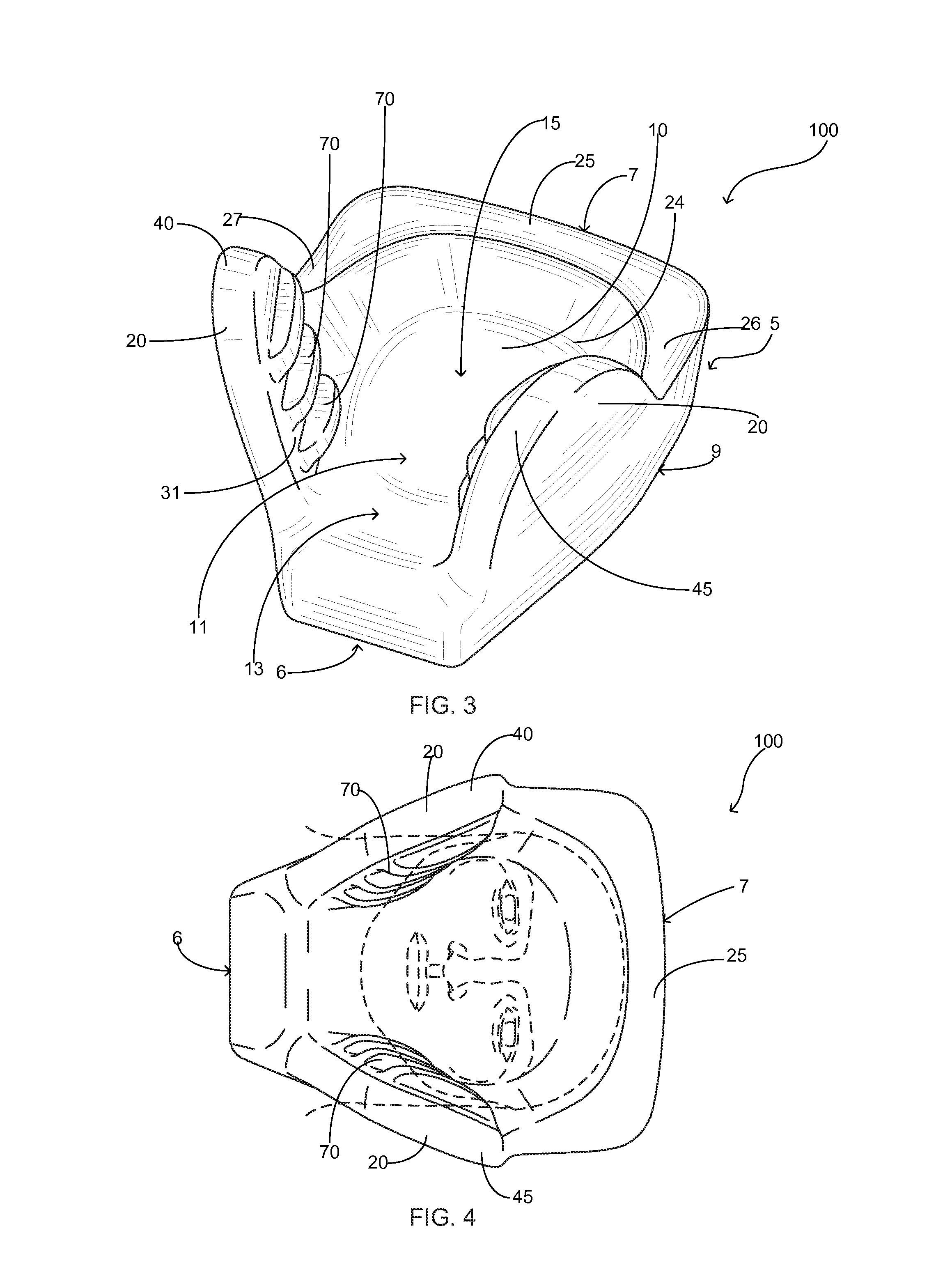Supine headrest with mandibular engaging portion
- Summary
- Abstract
- Description
- Claims
- Application Information
AI Technical Summary
Benefits of technology
Problems solved by technology
Method used
Image
Examples
Embodiment Construction
[0021]Referring now to the drawings submitted herewith, wherein various elements depicted therein are not necessarily drawn to scale and wherein through the views and figures like elements are referenced with identical reference numerals, there is illustrated a airway management pillow 100 constructed according to the principles of the present invention.
[0022]The airway management pillow 100 further includes a body 5 having base 10 that is modified rectangular in shape having a first end 6 and a second end 7 wherein the second end 7 is greater in width than the first end 6. The shape of the base 10 is designed to accommodate a human head and neck such that the first end 6 is narrower in order to laterally accommodate the neck of a patient engaged with the airway management pillow 100. The bottom 9 of the base 10 is generally flat in manner and is configured to be placed on a generally planar support surface such as but not limited to an operating table. The base 10 includes an upper...
PUM
 Login to View More
Login to View More Abstract
Description
Claims
Application Information
 Login to View More
Login to View More - R&D
- Intellectual Property
- Life Sciences
- Materials
- Tech Scout
- Unparalleled Data Quality
- Higher Quality Content
- 60% Fewer Hallucinations
Browse by: Latest US Patents, China's latest patents, Technical Efficacy Thesaurus, Application Domain, Technology Topic, Popular Technical Reports.
© 2025 PatSnap. All rights reserved.Legal|Privacy policy|Modern Slavery Act Transparency Statement|Sitemap|About US| Contact US: help@patsnap.com



